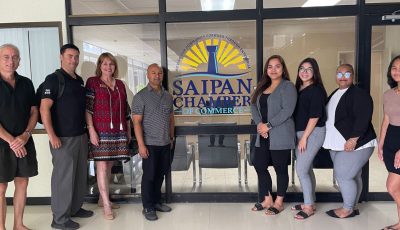NMI spending on higher education lowest among peers, states
The CNMI’s expenditure on higher education has been found to be the lowest among peer institutions and states across the nation at only 5 percent of the government’s total spending.
This was based on a recent study by the Northern Marianas College, which also showed that the CNMI has the lowest allocation per college student.
Records obtained by Saipan Tribune yesterday show that New Mexico has the highest percentage of state/local expenditures on higher education in fiscal year 2012 at 19.30 percent—far higher than the U.S. average and peer average of 10.50 percent and 10.10 percent, respectively. In second place is Nevada with 9.70 percent, followed by Florida at 7 percent.
On the study’s bottom list is the CNMI with a meager 5.0 percent expenditure for higher education.
In terms of funding sources, CNMI’s NMC was found using the biggest percentage of its tuition than the annual state appropriation. NMC had the following funding source: 14 percent from tuition and fees; 20 percent from appropriation; and 66 percent from federal grants.
In comparison, Guam Community College has the following: 8 percent from tuition; 38 percent from appropriation; and 44 percent from grants. In Chipola University, 13 percent is from tuition; 50 percent from appropriation; and 30 percent grants. The Great Basin College also had 13 percent from tuition, 60 percent from state appropriation, and 20 percent from grants.
Data also indicated that NMC has the lowest per student appropriation from the local budget at $3,988 per student.
In comparison, the Guam Community College has a per student appropriation of $10,174; University of Hawaii Community College, $6,310; College of the Marshall Islands, $5,385; and Palau Community College, $4,521.
Historical budget
NMC records released to Saipan Tribune yesterday indicated that for the past eight fiscal years, NMC’s budget has been significantly declining.
In fiscal years 2007 and 2008, the college’s appropriation was at $4.816 million.
This slightly declined in fiscal years 2009 and 2010 to $4.618 million. A further decline was noted in fiscal year 2011 when NMC was approved a budget of only $4.463 million. This went down to just $4.038 million in fiscal year 2012.
In fiscal year 2013, NMC was approved a budget of $4.011 million, which slightly went up in fiscal year 2014 to $4.162 million.
Time to invest
At a recent board meeting, Board of Regents member William Torres disclosed that the CNMI has a law that mandates a fixed amount for higher education. However, this statute is obviously being ignored and violated, he said.
Torres was referring to Public Law 9-5, which states: “The college shall be guaranteed an annual budget of not less than $6 million or 1 percent of the general revenues of the Commonwealth, whichever is greater.”
During Friday’s budget hearing at the Legislature, Torres reiterated this issue as pointed out the dire need of the college to fulfill its mission.
Torres chairs the board’s fiscal committee that recommended to the full board a $7.8 million budget for fiscal year 2015.
Data obtained by Saipan Tribune yesterday indicated that in terms of the “return on investments,” more and more NMC graduates are successfully finding jobs.
Between 2008 and 2012, job placement rates for NMC graduates increased from 72 percent to 89 percent.
Students are also increasingly successful at transferring from NMC to other colleges and universities. Data revealed that between 2008 and 2012 the percentage of NMC students graduating with an associate degree in Liberal Arts and transferring to other institutions increased from 50 percent to 70 percent.
NMC is also successfully recruiting more and more students from local high schools. Approximately 40 percent of all CNMI Public School System high school graduates enter NMC within one year of graduation.



























